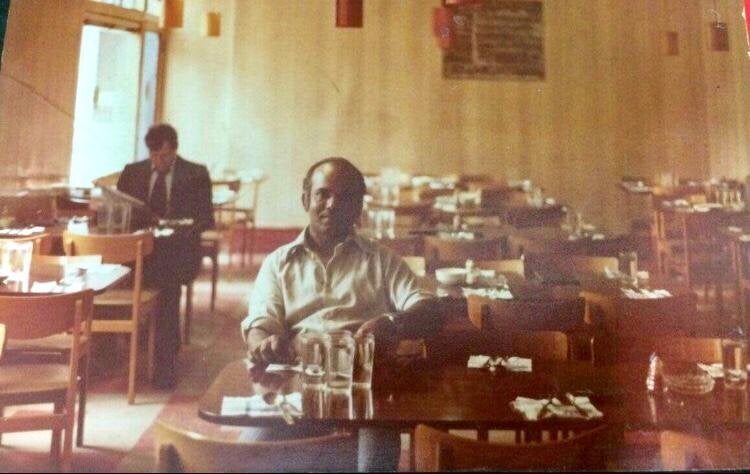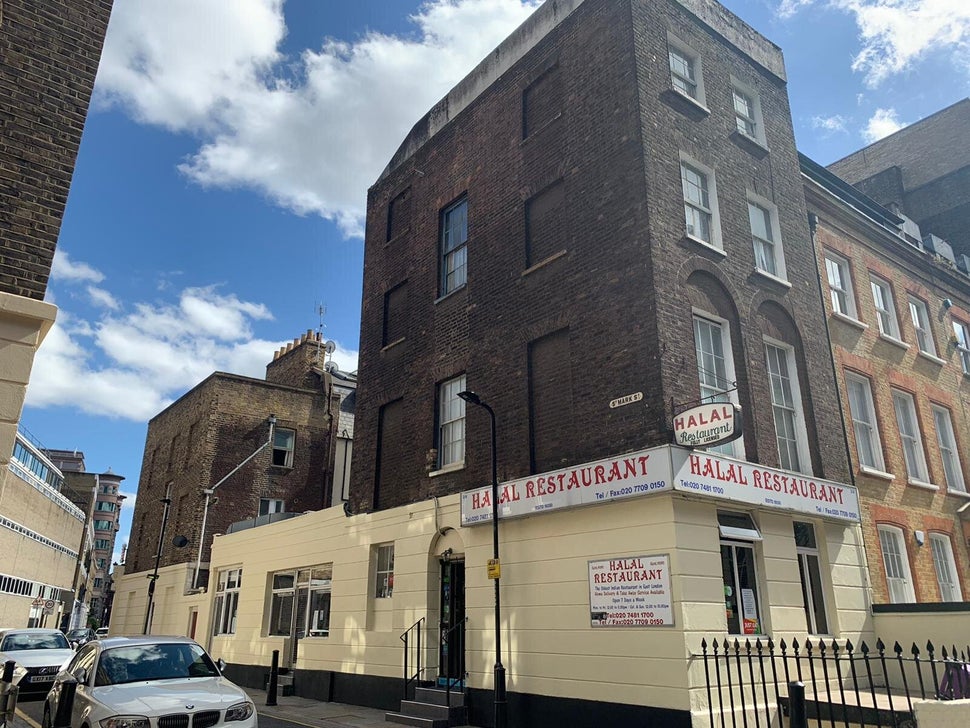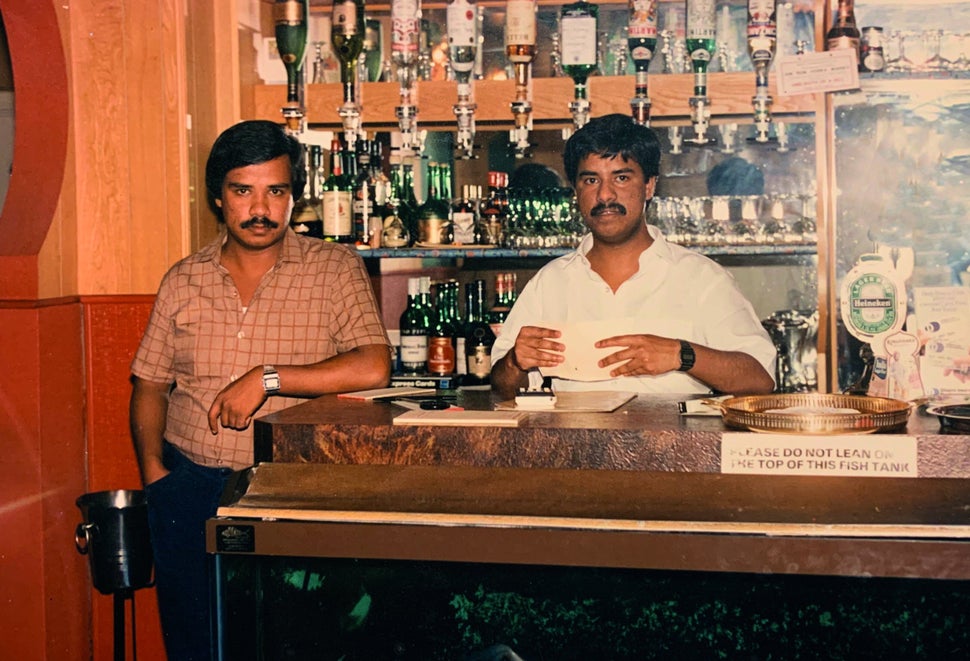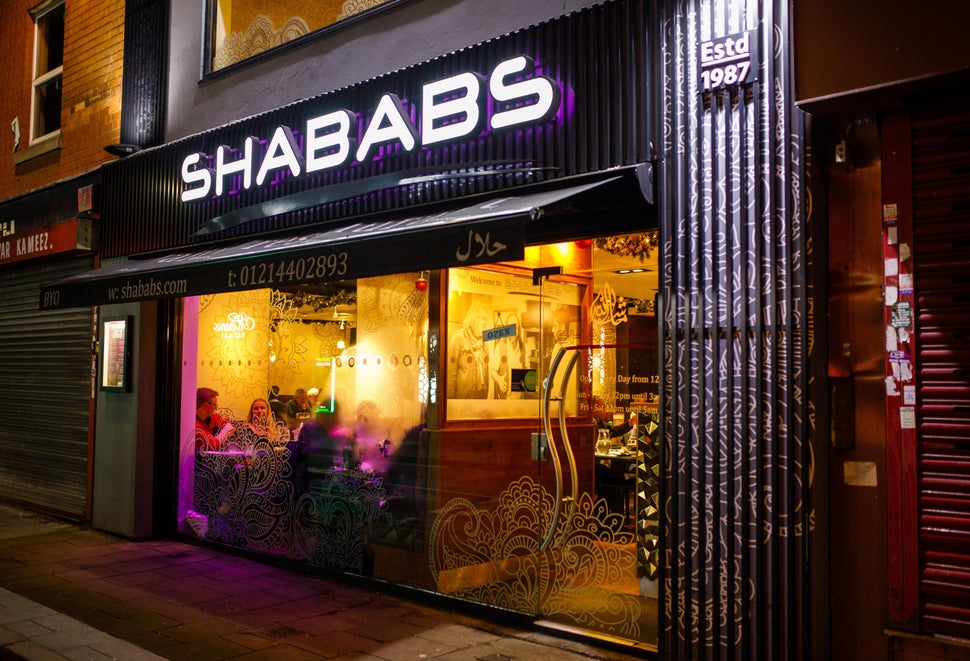“People think it’s another recession. It’s a pandemic and it will take us years to come out of this. It doesn’t look like it’s going anywhere.”
Ahmed Ahad owns City Spice – one of the most decorated restaurants in London’s famous Brick Lane curry district.
He isn’t the only one who’s concerned. Across the borough of Tower Hamlets in the capital’s East End, Covid-19 is undoing generations of hard work in family-run curry houses.
The area is home to a 37% south Asian population, which is made up of a large concentration of Bangladeshi, Indian and Pakistani people. Many of them migrated to England in the 1960s, ’70s and ’80s.
Among them was Mahaboob Narangoli’s father, who came came to England from Kerala, India, in 1970 and began working at the Halal Restaurant in Aldgate, near Brick Lane. His father slowly took over the business and left him to take over in 1986. The business is one of east London’s oldest Indian restaurants.
But competition for that title is dwindling every year. According to the latest research by Runnymede Trust, Brick Lane’s 35 curry restaurants as of 2014 had dropped to 20 by 2019. The spread of coronavirus within an already declining industry has put further strain on those who are left.
Narangoli told HuffPost UK: “Covid-19 has impacted the business very badly.
“99% of our customers come from the City [of London, the capital’s financial district nearby] and in the last few years there has been an influx of tourism.”

With City workers sent home at the beginning of lockdown in March, “we have lost trade from all sides, lunch and evening service”.
“It is a loss for any business owner,” he added, “so I’m not sure when it will be normal again.”
In its first three weeks of reopening in July, business was down 80 to 90%.
But after a tweet from Narangoli’s daughter Mehnaz about her father’s struggle for customers, there has been an outpouring of support. “It’s getting better now, since the tweet had gone viral, and the phone hasn’t stopped ringing,” he said.
Narangoli praised the government’s Eat Out To Help Out scheme. He said it was a “good incentive” and “it’s bringing in new customers like young people” to the restaurant.
“Many of the customers were reluctant to take the discount as they thought it was from us and they were aware we were struggling and without any business,” he said.

But City Spice owner Ahad says Eat Out To Help Out is “only working in the suburbs”.
“In central London,” he said, “customers are few and far between as there are no City workers or tourists.
“Our future is bleak at the moment, for many curry houses on Brick Lane.”
Ahad, who has been in the business for more than 18 years, told HuffPost UK: “People need to understand that this will take years to recover and will not be gone away by tomorrow morning.
“This is our entire livelihood.
“If the current situation continues till Christmas we will have lost an average total of £600,000 to £800,000 for the whole year – which we will have to write off.”

Other restaurant owners have a more “optimistic” view of the future for curry house owners in the UK.
Syed Pasha used to run a restaurant and is now editor-in-chief of Curry Life magazine in Tower Hamlets – the east London borough that includes Brick Lane and Aldgate. His magazine is distributed to over 7,000 south Asian curry houses across the UK.
Pasha and his brother, Syed Ahmed, ran Memsahib curry house in Nottingham in the 1980s. They were forced to sell the business amid the recession in 1980 to 1981.
He believes the primary reason for the decline in curry houses in Brick Lane is the “high rents which have driven many businesses out of the area”.
He said Brick Lane receives a “lack of positive publicity”, with accusations of “touting” – but is “optimistic” about the future of curry houses in the UK.
“If you walk through Brick Lane now, you can see more hairdressers than curry houses – it’s evident this is due to gentrification.”

The future of curry houses is “positive” and “many have survived through the recessions of the 1980s, ’90s and even in 2008,” he added.
“If you look at the suburbs, towns and villages around the country, people still have love for curry houses and authentic food.
“The coronavirus has impacted the whole industry, not just curry houses.
“Even big restaurants and curry house owners are under pressure to offer services like takeaway and deliveries like smaller curry houses.”
Although the Eat Out To Help Out scheme has been proving popular – diners used it 10.5m times in its first week alone – there is still criticism on the regularity and longevity of the customers coming to curry houses.
After visiting curry houses in areas such as Bedfordshire, Pasha has found “some restaurants have been complaining about customers coming in the week but being quieter on the weekends – which is their busiest time of the week”.
Birmingham’s Balti Triangle was the name coined by Birmingham City Council in the 1990s connecting a cluster of balti houses in Stoney Lane, Ladypool Road and Stratford Road. Many Pakistani Kashmiris migrated to Birmingham during the 1970s and ’80s and initially opened curry houses to cater for their own communities.
Zafar Hussain’s family-run Shabab’s Balti restaurant has been in the triangle area since 1987. His father migrated to Birmingham from Kashmir, and Hussain eventually took over 22 years ago.

He said: “We did well offering a takeaway service, but now it’s over, the footfall isn’t quite what it was. Some balti houses have closed as a result, because there just aren’t enough customers coming out to eat.
“On July 4, when we were set to reopen, we had bookings that would have filled the restaurant twice. But we had 75% no-shows and cancellations.”
Restaurateurs elsewhere in the country have expressed the fear of losing their name and reputation.
Firoz Ali, who has run Barton Bangla Brasserie in Preston, Lancashire, for 14 years, told HuffPost UK there are times where “we have to take a loss so our customers don’t forget who we are”.

“I feel there has been a lot of mixed messages and advice from the government concerning social distancing,” he said. “Some wear masks and some don’t. It’s confusing our customers.”
He also expressed concerns about the Eat Out To Help Out scheme, saying it had “deflated our weekend trade and given a lot of uncertainty around bookings”.
“We have lost on average 30% of our business while we were open as a takeaway and since the restaurant has opened we have become a 50-seater rather than a 110-seater to be in line with the government guidelines on socially distancing.
“Once the furlough scheme is finished, many people will be made redundant.”
Calling all HuffPost superfans!
Sign up for membership to become a founding member and help shape HuffPost’s next chapter
Credit: Source link